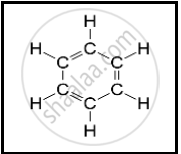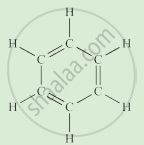Advertisements
Advertisements
प्रश्न
Give the formulae of the chlorides of the elements X and Y having atomic numbers of 3 and 6 respectively. Will the properties of the two chlorides be similar or different? Explain your answer.
उत्तर
The formula of the chloride of element X is XCl (or X+Cl-). Element X has an electronic configuration of 2,1. When it reacts with chlorine with electronic configuration 2,8,7, it transfers one electron to chlorine atom to form an ionic chloride compound.
The formula of the chloride of element Y is YCl4. Element Y has an electronic configuration of 2,4. When it reacts with chlorine with electronic configuration 2,8,7, it shares its four electrons with four chlorine atoms.
Properties of the two chlorides will be different because of the difference in the natures of bonding between them. For example, XCl, being ionic in nature, must have high melting and boiling points but YCl4, being covalent in nature, must have low melting and boiling points.
APPEARS IN
संबंधित प्रश्न
What are covalent compounds?
What type of bonds are present in hydrogen chloride and oxygen?
will CS2 conduct electricity or not?
give reason for your choice.
Draw the electron-dot structure of HCl compound and state the type of bonding.
What is graphite?
what substance is graphite made?
An element A has 4 valence electrons in its atom whereas element B has only one valence electron in its atom. The compound formed by A and B does not conduct electricity. What is the nature of chemical bond in the compound formed? Give its electron-dot structure.
Draw all possile structural formulae of compound from their molecular formula given below.
C4H10
The following structural formula belongs to which carbon compound?

What do you understand by lone pair and shared pair?
(a) Compound X consists of molecules.
Choose the letter corresponding to the correct answer from the choices (a), (b), (c) and (d) given below
In the liquid state, X will
Compare the compounds carbon tetrachloride and sodium chloride with regard to solubility in water and electrical conductivity.
Draw the electron dot diagram and structure of nitrogen molecule.
State the type of bond formed, and draw Lewis structure of water.
Name the anion present in the following compound:
When a barium chloride solution is added to a solution of compound B, a white precipitate insoluble in dilute hydrochloric acid is formed.
Fill in the blank and rewrite the completed statement:
Covalent compounds are generally soluble in _________ solvents.
Complete the following activity.
Write the names of the hydrocarbons for the following structural formula.
(isobutylene, cyclohexane, propene, cyclohexene, cyclopentane, benzene, propyne, isobutane, propane)
 |
Discuss in brief about the properties of coordinate covalent compounds.
Mineral acids are stronger acids than carboxylic acids because
- mineral acids are completely ionised
- carboxylic acids are completely ionised
- mineral acids are partially ionised
- carboxylic acids are partially ionised
The electron dot structure of chlorine molecule is:
